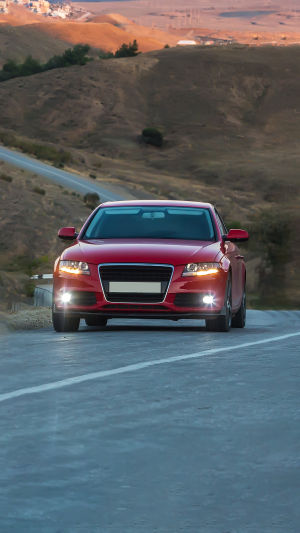With the continuous advancement of technology, cars have become an indispensable means of transportation in our daily lives.
Among the many components of a car, lights play a crucial role in ensuring both visibility and safety during various driving conditions.
They not only provide illumination for night driving but also serve as warning signals during daytime travel.
However, many drivers harbor misconceptions when it comes to utilizing car lights, potentially compromising road safety and posing risks to themselves and others. Hence, the accurate use of car lights becomes a critical concern that every driver should prioritize.
1. Correct Usage Time of Car Lights
1.1 Driving at Night
Night driving stands out as a crucial period when car lights prove most effective. With limited visibility during nighttime, insufficient lighting can lead to potential accidents. Hence, drivers must activate their headlights when driving at night to ensure clear visibility ahead on the road.
Adherence to traffic rules is essential during nighttime driving, and choosing appropriate lighting modes based on road conditions is crucial. On poorly lit roads, alternating between high and low beams helps prevent excessive reflection.
Moreover, when encountering oncoming vehicles, timely switching to low-beam headlights is necessary to prevent dazzling other drivers.
1.2 Bad Weather
Harsh weather conditions, such as rain, snow, and fog, emphasize the importance of using car lights. Activating fog lights and low beam lights enhances visibility, conveying your location information to fellow road users.
In foggy weather, it's not only essential to turn on front fog lights but also rear fog lights to improve recognition for drivers behind and mitigate the risk of rear-end collisions.
1.3 Tunnel Driving
Tunnels, characterized by relatively dark environments, require drivers to illuminate their vehicles for safety. Drivers should activate their car lights well in advance when entering a tunnel. Continuous usage of car lights within tunnels is crucial to prevent visual disruptions and reduce the risk of accidents.
2. Important Considerations when Using Car Lights
2.1 Avoid Prolonged Use of High Beams
While high-beam headlights are invaluable for nighttime driving, prolonged use can cause significant interference to other drivers, potentially dazzling oncoming traffic and increasing the risk of accidents.
It is essential, therefore, to refrain from using high beams for extended periods and to switch flexibly based on actual driving needs.
2.2 Emergency Situations: Promptly Contact Authorities
In the event of an emergency, such as an accident or vehicle breakdown, promptly using hazard warning lights becomes a necessity. These lights serve as crucial signals to alert other drivers, encouraging them to exercise caution, reduce speed, and subsequently lower the probability of secondary accidents.
2.3 Regularly Inspect Car Lights
Car lights are integral to ensuring driving safety; hence, regular inspections are paramount. Drivers should routinely check the condition of bulbs and clean lampshades to maintain light transparency and prevent dirt from affecting the lighting effect.
2.4 Avoid Over-Reliance on Car Lights
While car lights play a pivotal role during nighttime driving, it is crucial not to over-rely on them. Maintaining a moderate speed and increasing vigilance based on actual driving conditions contribute to overall safety.
Additionally, observing traffic conditions using reflectors and other tools enhances driving safety without solely depending on car lights.
In conclusion, the correct use of car lights is a fundamental requirement for ensuring road safety. Drivers must employ car lights judiciously according to varying driving situations, enhancing their visibility while remaining considerate of fellow road users.
Through responsible and rational use of vehicle lights, we can collaboratively contribute to the creation of a safer road environment, safeguarding ourselves and others during our journeys.





